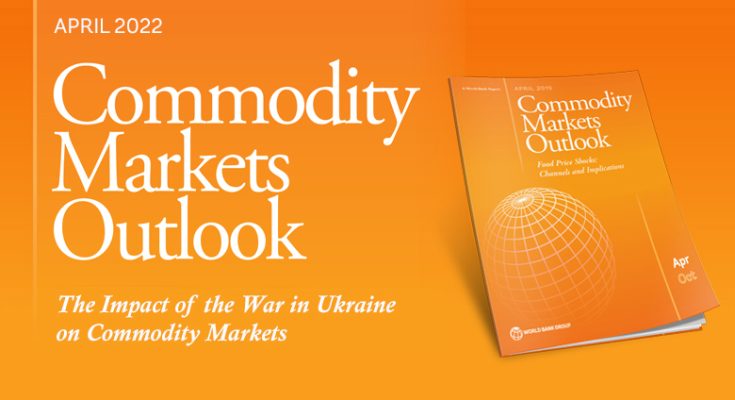The war in Ukraine has caused major supply disruptions and led to historically higher prices for a number of commodities. Most commodity prices are now expected to see sharp increases in 2022 and remain high in the medium term. The price of Brent crude oil is projected to average $100/bbl in 2022, a 40 percent increase from 2021. Non-energy prices are expected to rise by about 20 percent in 2022, with the largest increases in commodities where Russia or Ukraine are key exporters. Wheat prices in particular are forecast to increase more than 40 percent this year. While price pressures are expected to ease in 2023, commodity prices will remain much higher than previously expected. The outlook depends on the duration of the war and the severity of disruptions to commodity flows.
A Special Focus section investigates the impact of the war on commodity markets and compares the current episode with previous price spikes. It finds that previous oil price spikes led to the emergence of new sources of supplies and reduced demand in response to efficiency improvements and substitution for other commodities. In the case of food, new land was made available for food production. For policymakers, a short-term priority is providing targeted support to poorer households facing higher food and energy prices. For longer-lasting solutions, they facilitate investment in new sources of zero-carbon energy.
For the report: The Impact of the War in Ukraine on Commodity Markets




